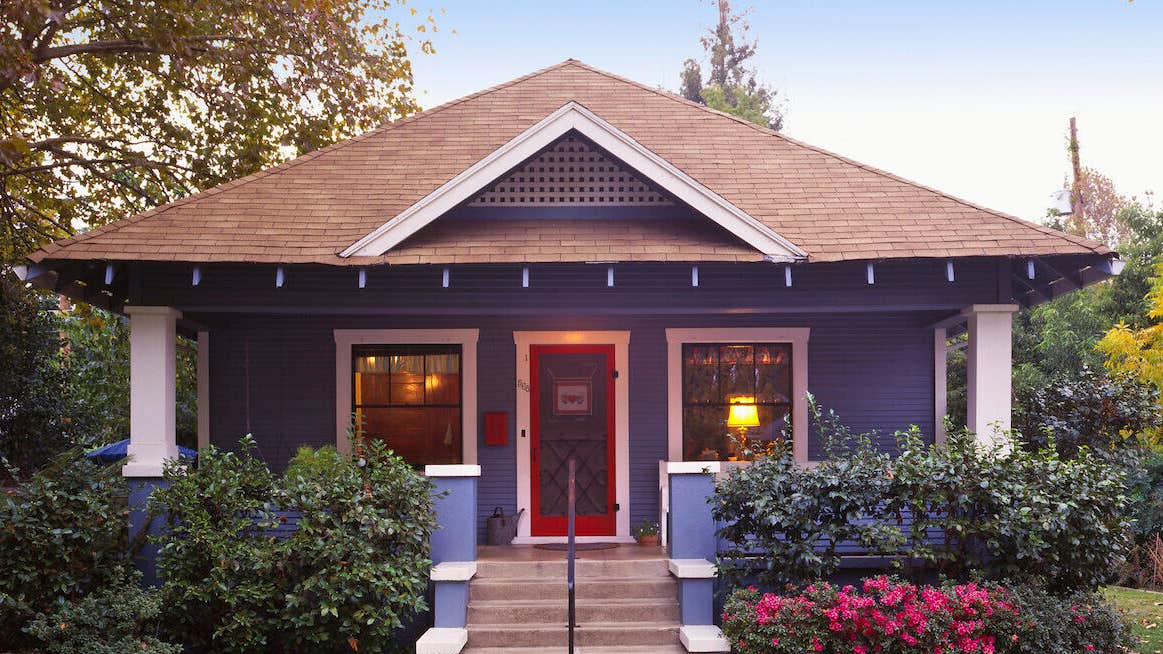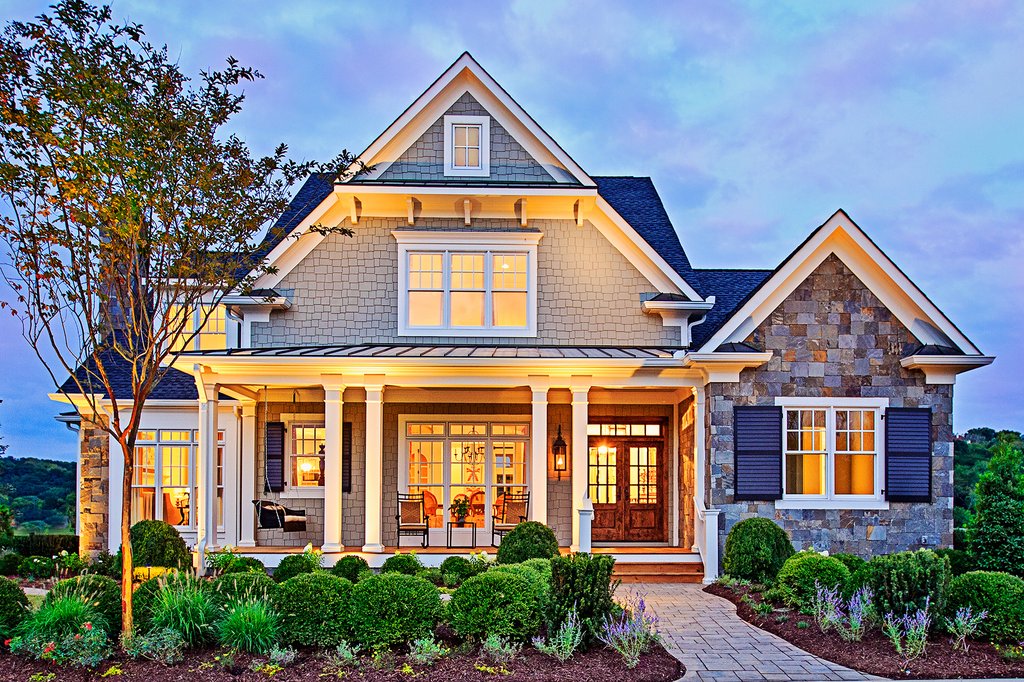The Function of Arts & & Crafts Architects in Elevating Architectural Solutions in Residential Design
Arts and Crafts architects considerably affect residential style through their commitment to craftsmanship and sustainability. They prioritize handcrafted information and all-natural products, which enhance both aesthetic appeals and community identification. By including customers in the design procedure, these architects develop unique living rooms that resonate with personal tastes. This approach elevates inquiries concerning the future trajectory of domestic architecture and its possible effect on community dynamics. craftsman style house. What lies in advance for this classic layout approach?

The Concepts of Arts and Crafts Architecture
The essence of Arts and Crafts architecture lies in its dedication to craftsmanship and simpleness. This building movement emerged in the late 19th century as a feedback to automation, emphasizing the value of handcrafted information and natural products. The concepts of Arts and Crafts architecture focus on capability and harmony with the setting. Frameworks commonly feature low-pitched roofing systems, vast eaves, and subjected rafters, advertising a sense of unity with nature.
Artisans played a considerable function in this design, often integrating decorative components like stained glass, floor tiles, and woodwork, which reflect neighborhood workmanship. The color palette often tends to be natural and suppressed, permitting structures to blend seamlessly into their environments. On top of that, the style motivates open layout and public spaces, cultivating a feeling of togetherness. Generally, the principles of Arts and Crafts architecture celebrate the beauty of simpleness and the value of human connection to both nature and area.

Lasting Practices in Residential Style
While the demand for ecologically accountable living continues to grow, sustainable practices in residential design have obtained significant traction amongst architects and house owners alike. Architects are progressively including energy-efficient innovations and sustainable materials into their designs, aiming to decrease carbon footprints and boost energy preservation. Methods such as easy solar design, eco-friendly roofing systems, and rain harvesting systems are ending up being typical parts of modern-day residential architecture.
Additionally, the choice of locally sourced materials lessens transportation discharges and supports regional economies. Focus on natural light and ventilation not only boosts interior air quality but likewise decreases dependence on man-made lighting and environment control systems. These lasting techniques show a dedication to protecting the setting while offering homeowners with comfy, effective home. As awareness of ecological concerns grows, the integration of sustainability in residential layout is poised to come to be a defining attribute of contemporary architecture, assisted by the principles established by Arts and Crafts architects.
Customization and Personalization in Home Design
Customization and customization in home style have actually become vital fads in response to the growing wish for one-of-a-kind living atmospheres that mirror specific preferences and lifestyles. Home owners progressively seek to customize spaces that resonate with their individualities, bring about a much more significant link with their home. craftsman style house. This motion encourages architects to engage clients in the design process, promoting partnership that assures the final outcome personifies the from this source homeowner's vision
Components such as bespoke layouts, customized materials, and tailored coatings permit a varied series of expressions in household design. Arts and Crafts architects play a critical function in this advancement, emphasizing workmanship and quality. Their concentrate on incorporating imaginative components with capability guarantees that each home is not only aesthetically pleasing yet also distinctively matched to the residents' requirements. Consequently, this focus on personalization boosts the general household experience, creating areas that are both individual and long-lasting.

The Influence of Arts and Crafts Architects on Community Visual Appeals
As areas evolve, the impact of Arts and Crafts architects significantly forms their visual landscape. By highlighting handmade information, all-natural products, and traditional building methods, these architects produce homes that reverberate with their surroundings. Their layouts commonly incorporate neighborhood vegetations, structures, and colors, promoting a sense of harmony between built settings and nature.
In addition, the Arts and Crafts motion promotes area identification with building continuity. By encouraging homeowners to adopt comparable layout principles, neighborhoods create a natural personality that improves aesthetic appeal. This architectural harmony not just enhances the visual experience but also imparts a feeling of pride amongst homeowners.
The emphasis on sustainability and craftsmanship in Arts and Crafts architecture aligns with modern worths, making these layouts appropriate in modern settings. Ultimately, Arts and Crafts architects add significantly to the general charm and social integrity of areas, leaving a lasting influence on their aesthetic tradition.

Future Trends in Arts and Crafts Architecture
With a boosting emphasis on sustainability and personalization, future patterns in Arts and Crafts architecture are positioned to blend typical craftsmanship with modern-day innovation - craftsman style house. Architects are most likely to prioritize eco-friendly products, making use of recovered wood and natural rock to improve special info the sustainability of residential designs. The combination of wise home technology will come to be prevalent, enabling personalized living experiences without endangering visual stability
The rebirth of artisanal techniques will certainly cultivate a restored gratitude for handcrafted elements, such as bespoke cabinets and custom floor tile work. Future layouts may also mirror a focus on community-oriented areas, motivating communication and connection among homeowners. Outside living locations will acquire importance, flawlessly integrating nature into the home environment. As Arts and Crafts architecture advances, it will remain to honor its origins while adapting to contemporary needs, creating unified areas that mirror private values and way of lives.
Regularly Asked Questions
What Influenced the Arts and Crafts Movement in Architecture?
The Arts and Crafts motion in architecture was motivated by a reaction versus automation, emphasizing handmade top quality, all-natural products, and a return to standard craftsmanship, aiming to create unified, useful areas that celebrated artistry and uniqueness.
Just how Do Arts and Crafts Architects Collaborate With Customers?
Arts and crafts architects collaborate with clients with go to these guys open discussion, focusing on individual requirements and visual appeals. They stress workmanship and sustainability, promoting a collaboration that integrates the client's vision with the engineer's competence in layout and materials.
What Products Are Commonly Made Use Of in Arts and Crafts Residences?
Typical materials in Arts and Crafts homes consist of all-natural wood, stone, and brick, stressing workmanship and natural aesthetic appeals. These aspects produce a warm, inviting atmosphere, mirroring the motion's dedication to high quality and simpleness in layout.
Exactly how Do Arts and Crafts Styles Boost Indoor Living Areas?
Arts and Crafts layouts improve interior home by advertising natural light, open floor strategies, and handcrafted information. These components foster a cozy, welcoming environment, urging a connection in between residents and their atmospheres via thoughtful, functional aesthetics.
What Are Some Famous Examples of Arts and Crafts Architecture?
Famous examples of Arts and Crafts architecture include the Gamble House, Greene and Greene's masterpiece in The golden state, and the Robie Residence by Frank Lloyd Wright. These frameworks display handcrafted information and consistency with nature, specifying the movement's significance.